Artificial Intelligence Applications and Self-Learning 6G Networks for Smart Cities Digital Ecosystems: Taxonomy, Challenges, and Future Directions
Abstract
:1. Introduction
- We provide a temporal evolution of the wireless communication network generations from 1G to AI-enabled 6G and capture the inherent challenges and technological requirements that lead to the development of a given network generation over a certain period.
- We present self-learning models that would be infused in 6G to accommodate the strict requirements of smart city applications in terms of low latency, high reliability, security, energy efficiency, execution time, and context awareness.
- We propose a taxonomy of distributed, dynamic, and contextual AI applications in 6G networks based on the underlying technology used by those applications. In addition, we provide insights on the requirements of these applications that should be considered by the underlying 6G networks.
- We propose future directions toward the realization of a trustworthy and efficient digital ecosystem consisting of intelligent and connected applications, the middleware, the underlying technologies, and the 6G network systems.
2. Related Survey
3. Evolution of Wireless Communication Technology (1G–6G)
3.1. First Generation (1G) Technology
3.2. Second Generation (2G) Technology
3.3. Third Generation (3G) Technology
3.4. Fourth Generation (4G) Technology
3.5. Fifth Generation (5G) Technology
3.6. Sixth Generation (6G) Technology
4. Artificial Intelligence (AI)-Enabled 6G Networks
4.1. Channel Estimation
4.2. Modulation Recognition
4.3. Traffic Classification
4.4. Traffic Prediction
4.5. Data Caching
4.6. Intelligent Routing
4.7. Radio Resource Management
4.8. Network Fault Management
4.9. Mobility Management
4.10. Energy Optimization
4.11. Intrusion Detection
4.12. Traffic Anomaly Detection
4.13. Botnet Detection
5. Taxonomy of Technology-Enabled Smart City Applications in 6G Networks
5.1. Internet of Things (IoT)
5.1.1. Internet of Vehicles (IoV)
5.1.2. Internet of Medical Things (IoMT)
5.1.3. Internet of Robotic Things (IoRT)
5.1.4. Internet of Drones (IoD)
5.1.5. Industrial Internet of Things (IioT)
5.2. Holographic Communication (HC)
5.3. Extended Reality (XR)
5.4. Blockchain
5.5. Edge-Cloud Computing
6. Future Directions
- Automated AI frameworks: In 6G networks, a massive amount of the data will be generated from the network, middleware, and application layers. The dynamic environment requires ongoing updates of the AI learning models’ parameters. In 6G networks where ultra-low latencies are a key requirement, tuning the parameters using traditional grid search or meta-heuristic approaches may introduce a computational overhead, degrading the performance of smart city applications and the underlying 6G networks. Consequently, there is a need for automated AI frameworks that would select the optimal models’ parameters based on the contextual applications and network dynamics.
- AI frameworks integration: The self-learning 6G networks in the smart city digital ecosystem will comprise numerous AI models at the network, middleware, and application layers. The output of the learning models from the application and middleware layers should be fed as the input to the learning models at the network layer in a dynamic environment. The high flexibility and scalability of the AI learning frameworks are crucial for supporting a high number of interactions between the learning models at different layers and providing dependable services in real time. Consequently, further research is required on how to integrate dependable, flexible, and scalable learning frameworks for smart city applications in 6G networks.
- Performance of AI models: In 6G networks, meeting the accuracies of the AI models to process high-dimensional dynamic data at the network, middleware, and application layers is crucial. However, these AI models, deep learning and meta-heuristics in particular, have high computational complexity and require a huge amount of time for convergence. This hinders the deployment of applications with ultra-low latency requirements such as robotics and automation, collision warning in the IoV, and AR map navigation. Furthermore, the computationally expensive AI models have a high energy consumption. Consequently, further research on how to design efficient AI approaches to improve computation efficiency and energy consumption is required.
7. Summary and Conclusions
Author Contributions
Funding
Institutional Review Board Statement
Informed Consent Statement
Data Availability Statement
Conflicts of Interest
References
- Buyya, R.; Dastjerdi, A.V. Internet of Things: Principles and Paradigms; Elsevier Science: Amsterdam, The Netherlands, 2016. [Google Scholar]
- Russell, S.; Norvig, P. Artificial Intelligence: A Modern Approach; Prentice Hall: Upper Saddle River, NJ, USA, 2002. [Google Scholar]
- AbdulRahman, S.; Tout, H.; Ould-Slimane, H.; Mourad, A.; Talhi, C.; Guizani, M. A survey on federated learning: The journey from centralized to distributed on-site learning and beyond. IEEE Internet Things J. 2021, 8, 546–5497. [Google Scholar] [CrossRef]
- Chen, M.; Mao, S.; Liu, Y. Big data: A survey. Mob. Netw. Appl. 2014, 19, 171–209. [Google Scholar] [CrossRef]
- Ismail, L.; Materwala, H. A Review of Blockchain Architecture and Consensus Protocols: Use Cases, Challenges, and Solutions. Symmetry 2019, 11, 1198. [Google Scholar] [CrossRef] [Green Version]
- Cao, K.; Hu, S.; Shi, Y.; Colombo, A.W.; Karnouskos, S.; Li, X. A Survey on Edge and Edge-Cloud Computing Assisted Cyber-Physical Systems. IEEE Trans. Ind. Inform. 2021, 17, 7806–7819. [Google Scholar] [CrossRef]
- Burns, R.; Fast, V.; Levenda, A.; Miller, B. Smart cities: Between worlding and provincialising. Urban Stud. 2021, 58, 461–470. [Google Scholar] [CrossRef]
- Materwala, H.; Ismail, L.; Shubair, R.M.; Buyya, R. Energy-SLA-aware genetic algorithm for edge–cloud integrated computation offloading in vehicular networks. Future Gener. Comput. Syst. 2022, 135, 205–222. [Google Scholar] [CrossRef]
- Zeng, X.; Garg, S.; Barika, M.; Zomaya, A.Y.; Wang, L.; Villari, M.; Chen, D.; Ranjan, R. SLA Management for Big Data Analytical Applications in Clouds: A Taxonomy Study. ACM Comput. Surv. 2021, 53, 1–40. [Google Scholar] [CrossRef]
- Ismail, L.; Materwala, H.; Hassanein, H.S. QoS-SLA-Aware Adaptive Genetic Algorithm for Multi-Request Offloading in Integrated Edge-Cloud Computing in Internet of Vehicles. arXiv 2022, arXiv:2202.01696. [Google Scholar]
- Ismail, L.; Materwala, H. IoT-Edge-Cloud Computing Framework for QoS-Aware Computation Offloading in Autonomous Mobile Agents: Modeling and Simulation. In Proceedings of the International Conference on Mobile Secure, and Programmable Networking, Paris, France, 28–29 October 2020; pp. 161–176. [Google Scholar]
- Ismail, L.; Materwala, H. Computing Server Power Modeling in a Data Center: Survey, Taxonomy, and Performance Evaluation. ACM Comput. Surv. 2020, 53, 1–34. [Google Scholar] [CrossRef]
- Liu, Y.; Wei, X.; Xiao, J.; Liu, Z.; Xu, Y.; Tian, Y. Energy consumption and emission mitigation prediction based on data center traffic and PUE for global data centers. Glob. Energy Interconnect. 2020, 3, 22–282. [Google Scholar] [CrossRef]
- Sunbird. How Much Does It Cost to Power One Rack in a Data Center? 2020. Available online: https://www.sunbirddcim.com/blog/how-much-does-it-cost-power-one-rack-data-center (accessed on 12 June 2022).
- Belkhir, L.; Elmeligi, A. Assessing ICT global emissions footprint: Trends to 2040 & recommendations. Clean. Prod. J. 2018, 177, 448–463. [Google Scholar]
- Akhtar, M.W.; Hassan, S.A.; Ghaffar, R.; Jung, H.; Garg, S.; Hossain, M.S. The shift to 6G communications: Vision and requirements. Hum.-Cent. Comput. Inf. Sci. 2020, 10, 1–27. [Google Scholar] [CrossRef]
- Tataria, H.; Shafi, M.; Molisch, A.F.; Dohler, M.; Sjöland, H.; Tufvesson, F. 6G wireless systems: Vision, requirements, challenges, insights, and opportunities. Proc. IEEE 2021, 109, 1166–1199. [Google Scholar] [CrossRef]
- Yang, H.; Alphones, A.; Xiong, Z.; Niyato, D.; Zhao, J.; Wu, K. Artificial-intelligence-enabled intelligent 6G networks. IEEE Netw. 2020, 34, 272–280. [Google Scholar] [CrossRef]
- Letaief, K.B.; Chen, W.; Shi, Y.; Zhang, J.; Zhang, Y.-J.A. The roadmap to 6G: AI empowered wireless networks. IEEE Commun. Mag. 2019, 57, 84–90. [Google Scholar] [CrossRef] [Green Version]
- Letaief, K.B.; Shi, Y.; Lu, J.; Lu, J. Edge Artificial Intelligence for 6G: Vision, Enabling Technologies, and Applications. IEEE J. Sel. Areas Commun. 2021, 40, 5–36. [Google Scholar] [CrossRef]
- Zhang, S.; Zhu, D. Towards artificial intelligence enabled 6G: State of the art, challenges, and opportunities. Comput. Netw. 2020, 183, 10755. [Google Scholar] [CrossRef]
- Del Peral-Rosado, J.A.; Raulefs, R.; López-Salcedo, J.A.; Seco-Granados, G. Survey of cellular mobile radio localization methods: From 1G to 5G. IEEE Commun. Surv. Tutor. 2017, 20, 1124–1148. [Google Scholar] [CrossRef]
- Gawas, A.U. An overview on evolution of mobile wireless communication networks: 1G–6G. Int. J. Recent Innov. Trends Comput. Commun. 2015, 3, 3130–3133. [Google Scholar]
- Niehenke, E.C. Wireless communications: Present and future: Introduction to focused issue articles. IEEE Microw. Mag. 2014, 15, 26–35. [Google Scholar] [CrossRef]
- Dekleva, S.; Shim, J.P.; Varshney, U.; Knoerzer, G. Evolution and emerging issues in mobile wireless networks. Commun. ACM 2007, 50, 38–43. [Google Scholar] [CrossRef]
- Hui, S.Y.; Yeung, K.H. Challenges in the migration to 4G mobile systems. IEEE Commun. Mag. 2003, 41, 54–59. [Google Scholar] [CrossRef]
- Bos, L.; Leroy, S. Toward an all-IP-based UMTS system architecture. IEEE Netw. 2001, 15, 36–45. [Google Scholar] [CrossRef]
- Clerckx, B.; Lozano, A.; Sesia, S.; van Rensburg, C.; Papadias, C.B. 3GPP LTE and LTE-Advanced. EURASIP Wirel. Commun. Netw. J. 2009, 2009, 1–167. [Google Scholar] [CrossRef] [Green Version]
- Gupta, A.A.; Jha, R.K. A survey of 5G network: Architecture and emerging technologies. IEEE Access 2015, 3, 1206–1232. [Google Scholar] [CrossRef]
- Shafi, M.; Molisch, A.F.; Smith, P.J.; Haustein, T.; Zhu, P.; De Silv, P.; Tufvesson, F.; Benjebbour, A.; Wunder, G. 5G: A tutorial overview of standards, trials, challenges, deployment, and practice. IEEE J. Sel. Areas Commun. 2017, 35, 1201–1221. [Google Scholar] [CrossRef]
- Huawei. Huawei 5.5G. 2020. Available online: https://www.huawei.com/en/news/2020/11/mbbf-shanghai-huawei-david-wang-5dot5g (accessed on 24 March 2022).
- Zhang, Z.; Xiao, Y.; Ma, Z.; Xiao, M.; Ding, Z.; Lei, X.; Karagiannidis, G.K.; Fan, P. 6G wireless networks: Vision, requirements, architecture, and key technologies. IEEE Veh. Technol. Mag. 2019, 14, 28–41. [Google Scholar] [CrossRef]
- Ismail, L.; Hagimont, D.; Mossiere, J. Evaluation of the mobile agents technology: Comparison with the Client/Server Paradigm. Inf. Sci. Technol. 2000, 19, 1–17. [Google Scholar]
- Ismail, L.; Belkkhouche, B. Full and autonomic mobility management for Mobile agents. In Proceedings of the First International Conference on Advances in Future Internet, Athens, Greece, 18–23 June 2009; pp. 31–38. [Google Scholar]
- Hagimont, D.; Ismail, L. Agents mobiles et client/serveur: Évaluation de performance et comparaison. Tech. Sci. Inform. 2000, 19, 1223–1244. [Google Scholar]
- Luong, N.C.; Hoang, D.T.; Gong, S.; Niyato, D.; Wang, P.; Liang, Y.-C.; Kim, D.I. Applications of deep reinforcement learning in communications and networking: A survey. IEEE Commun. Surv. Tutor. 2019, 21, 3133–3174. [Google Scholar] [CrossRef] [Green Version]
- Strinati, E.C.; Barbarossa, S.; Gonzalez-Jimenez, J.L.; Ktenas, D.; Cassiau, N.; Maret, L.; Dehos, C. 6G: The next frontier: From holographic messaging to artificial intelligence using subterahertz and visible light communication. IEEE Veh. Technol. Mag. 2019, 14, 42–50. [Google Scholar] [CrossRef]
- Akyildiz, I.F.; Jornet, J.M.; Han, C. Terahertz band: Next frontier for wireless communications. Phys. Commun. 2014, 12, 16–32. [Google Scholar] [CrossRef]
- Sarieddeen, H.; Alouini, M.-S.; Al-Naffouri, T.Y. Terahertz-band ultra-massive spatial modulation MIMO. IEEE J. Sel. Areas Commun. 2019, 37, 2040–2052. [Google Scholar] [CrossRef] [Green Version]
- Basar, E. Transmission through large intelligent surfaces: A new frontier in wireless communications. In Proceedings of the 2019 European Conference on Networks and Communications (EuCNC), Valencia, Spain, 18–21 June 2019; pp. 112–117. [Google Scholar]
- Ye, H.; Li, G.Y.; Juang, B.-H. Power of deep learning for channel estimation and signal detection in OFDM systems. IEEE Wirel. Commun. Lett. 2017, 7, 114–117. [Google Scholar] [CrossRef]
- Gao, H.M.; Zhong, C.; Li, G.Y.; Zhang, Z. An attention-aided deep learning framework for massive MIMO channel estimation. IEEE Trans. Wirel. Commun. 2021, 21, 1823–1835. [Google Scholar] [CrossRef]
- Ioffe, S.; Szegedy, C. Batch normalization: Accelerating deep network training by reducing internal covariate shift. In Proceedings of the International Conference on Machine Learning, Lille, France, 6–11 July 2015; pp. 448–456. [Google Scholar]
- Zhang, M.; Zeng, Y.; Han, Z.; Gong, Y. Automatic modulation recognition using deep learning architectures. In Proceedings of the 2018 IEEE 19th International Workshop on Signal Processing Advances in Wireless Communications (SPAWC), Kalamata, Greece, 25–28 June 2018. [Google Scholar]
- Yang, C.; He, Z.; Peng, Y.; Wang, Y.; Yang, J. Deep learning aided method for automatic modulation recognition. IEEE Access 2019, 7, 109063–109068. [Google Scholar] [CrossRef]
- Shi, Q.L.; Li, K.; Lin, Y. Signal Modulation Recognition Method Based on Differential Privacy Federated Learning. Wirel. Commun. Mob. Comput. 2021, 2021, 2537546. [Google Scholar] [CrossRef]
- Finsterbusch, M.; Richter, C.; Rocha, E.; Muller, J.-A.; Hanssgen, K. A survey of payload-based traffic classification approaches. IEEE Commun. Surv. Tutor. 2013, 16, 1135–1156. [Google Scholar] [CrossRef]
- Ren, X.; Gu, H.; Wei, W. Tree-RNN: Tree structural recurrent neural network for network traffic classification. Expert Syst. Appl. 2021, 167, 114363. [Google Scholar] [CrossRef]
- Lopez-Martin, M.; Carro, B.; Sanchez-Esguevillas, A.; Lloret, J. Network traffic classifier with convolutional and recurrent neural networks for Internet of Things. IEEE Access 2017, 5, 18042–18050. [Google Scholar] [CrossRef]
- Vinayakumar, R.; Soman, K.; Poornachandran, P. Applying deep learning approaches for network traffic prediction. In Proceedings of the 2017 International Conference on Advances in Computing, Communications and Informatics (ICACCI), Manipal, India, 13–16 September 2017; pp. 2353–2358. [Google Scholar]
- Aloraifan, D.; Ahmad, I.; Alrashed, E. Deep learning based network traffic matrix prediction. Int. J. Intell. Netw. 2021, 2, 46–56. [Google Scholar] [CrossRef]
- Liu, D.; Chen, B.; Yang, C.; Molisch, A.F. Caching at the wireless edge: Design aspects, challenges, and future directions. IEEE Commun. Mag. 2016, 54, 22–28. [Google Scholar] [CrossRef] [Green Version]
- Ismail, L. Implementation and performance of a dynamic-content based cache for a backend database server. In Proceedings of the IASTED International Conference on Software Engineering, Innsbruck, Austria, 12–14 February 2008; pp. 26–30. [Google Scholar]
- Jiang, F.; Yuan, Z.; Sun, C.; Wang, J. Deep Q-learning-based content caching with update strategy for fog radio access networks. IEEE Access 2019, 7, 97505–97514. [Google Scholar] [CrossRef]
- Yu, Z.; Hu, J.; Min, G.; Wang, Z.; Miao, W.; Li, S. Privacy-preserving federated deep learning for cooperative hierarchical caching in fog computing. IEEE Internet Things J. 2021. [Google Scholar] [CrossRef]
- Tang, F.; Mao, B.; Fadlullah, Z.; Kato, N.; Akashi, O.; Inoue, T.; Mizutani, K. On removing routing protocol from future wireless networks: A real-time deep learning approach for intelligent traffic control. IEEE Wirel. Commun. 2017, 25, 154–160. [Google Scholar] [CrossRef]
- Liu, W.; Cai, J.; Chen, Q.C.; Wang, Y. DRL-R: Deep reinforcement learning approach for intelligent routing in software-defined data-center networks. J. Netw. Comput. Appl. 2021, 177, 102865. [Google Scholar] [CrossRef]
- Shen, Y.; Shi, Y.; Zhang, J.; Letaief, K.B. Graph neural networks for scalable radio resource management: Architecture design and theoretical analysis. IEEE J. Sel. Areas Commun. 2020, 39, 101–115. [Google Scholar] [CrossRef]
- Zhang, H.; Zhang, H.; Long, K.; Karagiannidis, G.K. Deep learning based radio resource management in NOMA networks: User association, subchannel and power allocation. IEEE Trans. Netw. Sci. Eng. 2020, 7, 2406–2415. [Google Scholar] [CrossRef]
- Regin, R.; Rajest, S.S.; Singh, B. Fault Detection in Wireless Sensor Network Based on Deep Learning Algorithms. EAI Trans. Scalable Inf. Syst. 2021. [Google Scholar] [CrossRef]
- Swain, R.R.; Khilar, P.M.; Dash, T. Multifault diagnosis in WSN using a hybrid metaheuristic trained neural network. Digit. Commun. Netw. 2020, 6, 86–100. [Google Scholar] [CrossRef]
- Kumar, Y.; Farooq, H.; Imran, A. Fault prediction and reliability analysis in a real cellular network. In Proceedings of the 2017 13th International Wireless Communications and Mobile Computing Conference (IWCMC), Valencia, Spain, 26–30 June 2017; pp. 1090–1095. [Google Scholar]
- Zhao, Z.; Karimzadeh, M.; Pacheco, L.; Santos, H.; Rosário, D.; Braun, T.; Cerqueira, E. Mobility management with transferable reinforcement learning trajectory prediction. IEEE Trans. Netw. Serv. Manag. 2020, 17, 2102–2116. [Google Scholar] [CrossRef]
- Klus, R.; Klus, L.; Solomitckii, D.; Talvitie, J.; Valkama, M. Deep learning-based cell-level and beam-level mobility management system. Sensors 2020, 20, 7124. [Google Scholar] [CrossRef] [PubMed]
- Wei, Y.; Yu, F.R.; Song, M.; Han, Z. User scheduling and resource allocation in HetNets with hybrid energy supply: An actor-critic reinforcement learning approach. IEEE Trans. Wirel. Commun. 2017, 17, 680–692. [Google Scholar] [CrossRef]
- Kong, P.-Y.; Panaitopol, D. Reinforcement learning approach to dynamic activation of base station resources in wireless networks. In Proceedings of the 2013 IEEE 24th Annual International Symposium on Personal, Indoor, and Mobile Radio Communications (PIMRC), London, UK, 8–11 September 2013; pp. 3264–3268. [Google Scholar]
- Sharifi, A.M.; Amirgholipour, S.K.; Pourebrahimi, A. Intrusion Detection Based on Joint of K-Means and KNN. J. Converg. Inf. Technol. 2015, 10, 42–51. [Google Scholar]
- Yin, B.; Zhu, Y.; Fei, J.; He, X. A deep learning approach for intrusion detection using recurrent neural networks. IEEE Access 2017, 5, 21954–21961. [Google Scholar] [CrossRef]
- Kim, T.Y.; Cho, S.B. Web traffic anomaly detection using C-LSTM neural networks. Expert Syst. Appl. 2018, 106, 66–76. [Google Scholar] [CrossRef]
- Naseer, S.; Saleem, Y.; Khalid, S.; Bashir, M.K.; Han, J.; Iqbal, M.M.; Han, K. Enhanced network anomaly detection based on deep neural networks. IEEE Access 2018, 6, 48231–48246. [Google Scholar] [CrossRef]
- Vormayr, G.; Zseby, T.; Fabini, J. Botnet communication patterns. IEEE Commun. Surv. Tutor. 2017, 19, 2768–2796. [Google Scholar] [CrossRef]
- Koroniotis, N.; Moustafa, N.; Sitnikova, E.; Turnbull, B. Towards the development of realistic botnet dataset in the internet of things for network forensic analytics: Bot-iot dataset. Future Gener. Comput. Syst. 2019, 100, 779–796. [Google Scholar] [CrossRef] [Green Version]
- Injadat, M.; Moubayed, A.; Shami, A. Detecting botnet attacks in IoT environments: An optimized machine learning approach. In Proceedings of the 2020 32nd International Conference on Microelectronics (ICM), Aqaba, Jordan, 14–17 December 2020; pp. 1–4. [Google Scholar]
- Popoola, S.I.; Adebisi, B.; Hammoudeh, M.; Gui, G.; Gacanin, H. Hybrid deep learning for botnet attack detection in the internet-of-things networks. IEEE Internet Things J. 2020, 8, 4944–4956. [Google Scholar] [CrossRef]
- Nord, J.H.; Koohang, A.; Paliszkiewicz, J. The Internet of Things: Review and theoretical framework. Expert Syst. Appl. 2019, 133, 97–108. [Google Scholar] [CrossRef]
- Sharma, S.; Kaushik, B. A survey on internet of vehicles: Applications, security issues & solutions. Veh. Commun. 2019, 20, 100182. [Google Scholar]
- Allied Market Research. Internet of Vehicle Market Growth. 2018. Available online: https://www.alliedmarketresearch.com/internet-of-vehicles-market#:~:text=The%20global%20internet%20of%20vehicles,18.00%25%20from%202018%20to%202024 (accessed on 25 March 2022).
- Heath, R.; Gonzalez-Prelcic, N. Vehicle-to-everything (V2X) communication in 5G and beyond. In Proceedings of the IEEE International Conference on Communications (ICC), online, 7–11 June 2020. [Google Scholar]
- Schotten, H.D.; Sattiraju, R.; Serrano, D.G.; Ren, Z.; Fertl, P. Availability indication as key enabler for ultra-reliable communication in 5G. In Proceedings of the 2014 European Conference on Networks and Communications (EuCNC), Bologna, Italy, 23–26 June 2014; pp. 1–5. [Google Scholar]
- Katsaros, K.; Dianati, M. A conceptual 5G vehicular networking architecture. In 5G Mobile Communications; Springer: Berlin/Heidelberg, Germany, 2017; pp. 595–623. [Google Scholar]
- Shah, S.A.A.; Ahmed, E.; Imran, M.; Zeadally, S. 5G for vehicular communications. IEEE Commun. Mag. 2018, 56, 111–117. [Google Scholar] [CrossRef]
- Precedence Research. Internet of Medical Things Market Growth. 2021. Available online: https://www.precedenceresearch.com/internet-of-medical-things-market (accessed on 25 March 2022).
- Aman, A.H.M.; Hassan, W.H.; Sameen, S.; Attarbashi, Z.S.; Alizadeh, M.; Latiff, L.A. IoMT amid COVID-19 pandemic: Application, architecture, technology, and security. J. Netw. Comput. Appl. 2021, 174, 10288. [Google Scholar]
- Antonakoglou, K.; Xu, X.; Steinbach, E.; Mahmoodi, T.; Dohler, M. Toward haptic communications over the 5G tactile Internet. IEEE Commun. Surv. Tutor. 2018, 20, 3034–3059. [Google Scholar] [CrossRef] [Green Version]
- Fettweis, G.P. The tactile internet: Applications and challenges. IEEE Veh. Technol. Mag. 2014, 9, 64–70. [Google Scholar] [CrossRef]
- Aijaz, A.; Dohler, M.; Aghvami, A.H.; Friderikos, V.; Frodigh, M. Realizing the tactile Internet: Haptic communications over next generation 5G cellular networks. IEEE Wirel. Commun. 2016, 24, 82–89. [Google Scholar] [CrossRef] [Green Version]
- Ray, P. Internet of robotic things: Concept, technologies, and challenges. IEEE Access 2016, 4, 9489–9500. [Google Scholar] [CrossRef]
- Research and Markets. Internet of Robotic Things Market Growth. 2016. Available online: https://www.researchandmarkets.com/reports/3873998/internet-of-robotic-things-market-by-component (accessed on 25 March 2022).
- Vermesan, O.; Bahr, R.; Ottella, M.; Serrano, M.; Karlsen, T.; Wahlstrøm, T.; Sand, H.E.; Ashwathnarayan, M.; Gamba, M.T. Internet of robotic things intelligent connectivity and platforms. Front. Robot. AI 2020, 7, 104. [Google Scholar] [CrossRef]
- Abualigah, L.; Diabat, A.; Sumari, P.; Gandomi, A.H. Applications, deployments, and integration of internet of drones (iod): A review. IEEE Sens. J. 2021, 21, 25532–25546. [Google Scholar] [CrossRef]
- IMARC Group. Drones Market Growth. 2021. Available online: https://www.imarcgroup.com/drones-market (accessed on 25 March 2022).
- Boccadoro, P.; Striccoli, D.; Grieco, L.A. An extensive survey on the Internet of Drones. Ad Hoc Netw. 2021, 122, 102600. [Google Scholar] [CrossRef]
- Khan, W.Z.; Rehman, M.; Zangoti, H.M.; Afzal, M.K.; Armi, N.; Salah, K. Industrial internet of things: Recent advances, enabling technologies and open challenges. Comput. Electr. Eng. 2020, 81, 106522. [Google Scholar] [CrossRef]
- Allied Market Research. Industrial Internet of Things Market Growth. 2018. Available online: https://www.alliedmarketresearch.com/industrial-internet-of-things-IIOT-market (accessed on 25 March 2022).
- Sisinni, E.; Saifullah, A.; Han, S.; Jennehag, U.; Gidlund, M. Industrial internet of things: Challenges, opportunities, and directions. IEEE Trans. Ind. Inform. 2018, 14, 4724–4734. [Google Scholar] [CrossRef]
- Vega, M.T.; Mehmli, T.; van der Hooft, J.; Wauters, T.; De Turck, F. Enabling virtual reality for the tactile Internet: Hurdles and opportunities. In Proceedings of the 2018 14th International Conference on Network and Service Management (CNSM), Rome, Italy, 5–9 November 2018; pp. 378–383. [Google Scholar]
- Allied Market Research. Holographic Display Market Growth. 2021. Available online: https://www.alliedmarketresearch.com/holographic-display-market-A12501 (accessed on 25 March 2022).
- Clemm, A.; Vega, M.T.; Ravuri, H.K.; Wauters, T.; De Turck, F. Toward truly immersive holographic-type communication: Challenges and solutions. IEEE Commun. Mag. 2020, 58, 93–99. [Google Scholar] [CrossRef]
- Li, R. Network 2030: Market Drivers and Prospects. In Proceedings of the 1st ITU Workshop on Network 2030, Brooklyn, NY, USA, 2 October 2018. [Google Scholar]
- Matsubayashi, A.; Makino, Y.; Shinoda, H. Direct finger manipulation of 3D object image with ultrasound haptic feedback. In Proceedings of the 2019 CHI Conference on Human Factors in Computing Systems, Glasgow, UK, 4–9 May 2019; pp. 1–11. [Google Scholar]
- Shahbazi, M.; Atashzar, S.F.; Patel, R.V. A systematic review of multilateral teleoperation systems. IEEE Trans. Haptics 2018, 11, 338–356. [Google Scholar] [CrossRef]
- Mahmoud, H.H.H.; Amer, A.A.; Ismail, T. 6G: A comprehensive survey on technologies, applications, challenges, and research problems. Trans. Emerg. Telecommun. Technol. 2021, 32, 1–11. [Google Scholar] [CrossRef]
- Saad, W.; Bennis, M.; Chen, M. A vision of 6G wireless systems: Applications, trends, technologies, and open research problems. IEEE Netw. 2019, 34, 134–142. [Google Scholar] [CrossRef] [Green Version]
- Alasbali, N.; Azzuhri, S.R.B.; Salleh, R.B.; Kiah, M.L.M.; Shariffuddin, A.A.A.S.A.; Kamel, N.M.I.b.N.M.; Ismail, L. Rules of Smart IoT Networks within Smart Cities towards Blockchain Standardization. Mob. Inf. Syst. 2022, 2022, 9109300. [Google Scholar] [CrossRef]
- Ismail, L.; Barka, E. Key distribution framework for a mobile agent platform. In Proceedings of the 2008 The Second International Conference on Next Generation Mobile Applications, Services, and Technologies, Cardiff, UK, 16–19 September 2008. [Google Scholar]
- Ismail, L. Authentication Mechanisms for Mobile Agents. In Proceedings of the Second International Conference on Availability, Reliability and Security (ARES’07), Vienna, Austria, 10–13 April 2007; pp. 246–253. [Google Scholar]
- Ismail, L. Evaluation of Authentication Mechanisms for Mobile Agents on top of Java. In Proceedings of the 6th IEEE/ACIS International Conference on Computer and Information Science, Melbourne, Australia, 1–13 July 2007. [Google Scholar]
- Ismail, L.; Materwala, H.; Hennebelle, A. A Scoping Review of Integrated Blockchain-Cloud (BcC) Architecture for Healthcare: Applications, Challenges and Solutions. Sensors 2021, 21, 3753. [Google Scholar] [CrossRef]
- Ismail, L.; Zeadally, S. Healthcare Insurance Frauds: Taxonomy and Blockchain-based Detection Framework (Block-HI). IT Prof. 2021, 23, 36–43. [Google Scholar] [CrossRef]
- McGhin, T.; Choo, K.-K.R.; Liu, C.Z.; He, D. Blockchain in healthcare applications: Research challenges and opportunities. J. Netw. Comput. Appl. 2019, 135, 62–75. [Google Scholar] [CrossRef]
- Ismail, L.; Materwala, H. BlockHR: A Blockchain-based Framework for Health Records Management. In Proceedings of the 12th International Conference on Computer Modeling and Simulation, Brisbane, Australia, 22–24 June 2020; pp. 164–168. [Google Scholar]
- Ismail, L.; Materwala, H.; Khan, M.A. Performance Evaluation of a Patient-Centric Blockchain-based Healthcare Records Management Framework. In Proceedings of the 2020 2nd International Electronics Communication Conference, Singapore, 8–10 July 2020; pp. 39–50. [Google Scholar]
- Peng, W.C.; Gao, L.; Zhang, J.; Yau, K.-L.A.; Ji, Y. Blockchain for Vehicular Internet of Things: Recent Advances and Open Issues. Sensors 2020, 20, 5079. [Google Scholar] [CrossRef] [PubMed]
- Mershad, K.; Cheikhrouhou, O.; Ismail, L. Proof of accumulated trust: A new consensus protocol for the security of the IoV. Veh. Commun. 2021, 32, 100392. [Google Scholar] [CrossRef]
- Li, Z.; Kang, J.; Yu, R.; Ye, D.; Deng, Q.; Zhang, Y. Consortium blockchain for secure energy trading in industrial internet of things. IEEE Trans. Ind. Inform. 2017, 14, 3690–3700. [Google Scholar] [CrossRef] [Green Version]
- Materwala, H.; Ismail, L. Secure and Privacy-Preserving Lightweight Blockchain for Energy Trading. In Proceedings of the 2021 8th International Conference on Future Internet of Things and Cloud (FiCloud), Rome, Italy, 23–25 August 2021; pp. 394–399. [Google Scholar]
- Turkanović, M.; Hölbl, M.; Košič, K.; Heričko, M.; Kamišalić, A. EduCTX: A Blockchain-Based Higher Education Credit Platform. IEEE Access 2018, 6, 5112–5127. [Google Scholar] [CrossRef]
- Ismail, L.; Heba, H.; AlShamsi, M.; AlHammadi, M.; AlDhanhani, N. Towards a Blockchain Deployment at UAE University: Performance Evaluation and Blockchain Taxonomy. In Proceedings of the 2019 International Conference on Blockchain Technology, Atlanta, GA, USA, 14–17 July 2019. [Google Scholar]
- Baudier, P.; Kondrateva, G.; Ammi, C.; Seulliet, E. Peace engineering: The contribution of blockchain systems to the e-voting process. Technol. Forecast. Soc. Chang. 2021, 162, 120397. [Google Scholar] [CrossRef]
- Gao, Y.; Pan, Q.; Liu, Y.; Lin, H.; Chen, Y.; Wen, Q. The Notarial Office in E-government: A Blockchain-Based Solution. IEEE Access 2021, 9, 44411–44425. [Google Scholar] [CrossRef]
- Ismail, L. Communication issues in parallel conjugate gradient method using a star-based network. In Proceedings of the International Conference on Computer Applications and Industrial Electronics, Kuala Lumpur, Malaysia, 5–8 December 2010; pp. 350–355. [Google Scholar]
- Ismail, L.; Shuaib, K. Empirical Study for Communication Cost of Parallel Conjugate Gradient on a Star-Based Network. In Proceedings of the Fourth Asia International Conference on Mathematical/Analytical Modelling and Computer Simulation, Kota Kinabalu, Malaysia, 26–28 May 2010; pp. 498–503. [Google Scholar]
- Ismail, L.; Materwala, H.; Sharaf, Y. BlockHR–A Blockchain-based Healthcare Records Management Framework: Performance Evaluation and Comparison with Client/Server Architecture. In Proceedings of the 2020 International Symposium on Networks, Computers and Communications (ISNCC), Montreal, QC, Canada, 16–18 June 2020; pp. 1–8. [Google Scholar]
- Ismail, L.; Abed, E.H. Linear Power Modeling for Cloud Data Centers: Taxonomy, Locally Corrected Linear Regression, Simulation Framework and Evaluation. IEEE Access 2019, 7, 175003–175019. [Google Scholar] [CrossRef]
- Ismail, L.; Materwala, H. IDMPF: Intelligent diabetes mellitus prediction framework using machine learning. Appl. Comput. Inform. 2021. [Google Scholar] [CrossRef]
- Ismail, L.; Materwala, H.; Tayefi, M.; Ngo, P.; Karduck, A.P. Type 2 Diabetes with Artificial Intelligence Machine Learning: Methods and Evaluation. Arch. Comput. Methods Eng. 2022, 29, 313–333. [Google Scholar] [CrossRef]
- Ismail, L.; Materwala, H. Comparative Analysis of Machine Learning Models for Diabetes Mellitus Type 2 Prediction. In Proceedings of the 2020 International Conference on Computational Science and Computational Intelligence (CSCI), Las Vegas, NV, USA, 16–18 December 2020. [Google Scholar] [CrossRef]
- Alamri, R.; Alharbi, B. Explainable Student Performance Prediction Models: A Systematic Review. IEEE Access 2021, 9, 33132–33143. [Google Scholar] [CrossRef]
- Ismail, L.; Materwala, H.; Hennebelle, A. Comparative Analysis of Machine Learning Models for Students’ Performance Prediction. In Proceedings of the International Conference on Advances in Digital Science Salvador, Salvador, Brazil, 19–21 February 2021; pp. 149–160. [Google Scholar]
- Xu, Z.; Yuan, H.; Liu, Q. Student performance prediction based on blended learning. IEEE Trans. Educ. 2021, 64, 66–73. [Google Scholar] [CrossRef]
- Ismail, L.; Zhang, L. Information Innovation Technology in Smart Cities; Springer: Singapore, 2018. [Google Scholar]
- Hung, J.-L.; He, W.; Shen, J. Big data analytics for supply chain relationship in banking. Ind. Mark. Manag. 2020, 86, 144–153. [Google Scholar] [CrossRef]
- Gubran Al-Hashedi, K.; Magalingam, P. Financial fraud detection applying data mining techniques: A comprehensive review from 2009 to 2019. Comput. Sci. Rev. 2021, 40, 10040. [Google Scholar]
- Akhavan-Hejazi, H.; Mohsenian-Rad, H. Power systems big data analytics: An assessment of paradigm shift barriers and prospects. Energy Rep. 2018, 4, 91–100. [Google Scholar] [CrossRef]
- Pérez-Chacón, R.; Luna-Romera, J.M.; Troncoso, A.; Martínez-Álvarez, F.; Riquelme, J.C. Big Data Analytics for Discovering Electricity Consumption Patterns in Smart Cities. Energies 2018, 11, 683. [Google Scholar] [CrossRef] [Green Version]
- Faroukhi, A.Z.; El Alaoui, I.; Gahi, Y.; Amine, A. Big data monetization throughout Big Data Value Chain: A comprehensive review. J. Big Data 2020, 7, 1–22. [Google Scholar]
- Jabbar, A.; Akhtar, P.; Dani, S. Real-time big data processing for instantaneous marketing decisions: A problematization approach. Ind. Mark. Manag. 2020, 90, 558–569. [Google Scholar] [CrossRef]
- Ismail, L.; Masud, M.M.; Khan, L. FSBD: A framework for scheduling of big data mining in cloud computing. In Proceedings of the 2014 IEEE International Congress on Big Data (BigData Congress), Anchorage, AK, USA, 27 June–2 July 2014; pp. 514–521. [Google Scholar]
- Materwala, H.; Ismail, L. Energy-Aware Edge-Cloud Computation Offloading for Smart Connected Health. In Proceedings of the 2021 8th International Conference on Future Internet of Things and Cloud (FiCloud), Rome, Italy, 23–25 August 2021; pp. 144–150. [Google Scholar]
- Ismail, L.; Materwala, H. Machine Learning-based Energy-Aware Offloading in Edge-Cloud Vehicular Networks. Procedia Comput. Sci. 2021, 191, 328–336. [Google Scholar] [CrossRef]
- Ismail, L.; Materwala, H. ESCOVE: Energy-SLA-Aware Edge-Cloud Computation Offloading in Vehicular Networks. Sensors 2021, 21, 5233. [Google Scholar] [CrossRef]
- Materwala, H.; Ismail, L. Performance and Energy-Aware Bi-objective Tasks Scheduling for Cloud Data Centers. Procedia Comput. Sci. 2021, 197, 238–246. [Google Scholar] [CrossRef]
- Liu, F.; Huang, Z.; Wang, L. Energy-efficient collaborative task computation offloading in cloud-assisted edge computing for IoT sensors. Sensors 2019, 19, 1105. [Google Scholar] [CrossRef] [PubMed] [Green Version]
- Ismail, L.; Materwala, H. Artificial Intelligent Agent for Energy Savings in Cloud Computing Environment: Implementation and Performance Evaluation. In Proceedings of the Agents and Multi-Agent Systems: Technologies and Applications, Split, Croatia, 17–19 June 2020; pp. 127–140. [Google Scholar]
- Ismail, L.; Materwala, H. EATSVM: Energy-Aware Task Scheduling on Cloud Virtual Machines. Procedia Comput. Sci. 2018, 135, 248–258. [Google Scholar] [CrossRef]
- Ismail, L.; Fardoun, A.A. Energy-Aware Task Scheduling (EATS) Framework for Efficient Energy in Smart Cities Cloud Computing Infrastructures. Int. J. Therm. Environ. Eng. 2016, 13, 37–48. [Google Scholar]
- Wu, H.; Wolter, K.; Jiao, P.; Deng, Y.; Zhao, Y.; Xu, M. EEDTO: An energy-efficient dynamic task offloading algorithm for blockchain-enabled IoT-edge-cloud orchestrated computing. IEEE Internet Things J. 2020, 8, 2163–2176. [Google Scholar] [CrossRef]
- Li, X.; Garraghan, P.; Jiang, X.; Wu, Z.; Xu, J. Holistic Virtual Machine Scheduling in Cloud Datacenters towards Minimizing Total Energy. IEEE Trans. Parallel Distrib. Syst. 2018, 29, 1317–1331. [Google Scholar] [CrossRef] [Green Version]
- Leila; Bruce, M.; Alain, H. A formal model of dynamic resource allocation in Grid computing environment. In Proceedings of the 2008 Ninth ACIS International Conference on Software Engineering, Artificial Intelligence, Networking, and Parallel/Distributed Computing, Phuket, Thailand, 6–8 August 2008. [Google Scholar]
- Ismail, L. Dynamic Resource Allocation Mechanisms for Grid Computing Environment. In Proceedings of the 2007 3rd International Conference on Testbeds and Research Infrastructure for the Development of Networks and Communities, Orlando, FL, USA, 21–23 May 2007. [Google Scholar]
- Qureshi, B. Profile-based power-aware workflow scheduling framework for energy-efficient data centers. Future Gener. Comput. Syst. 2019, 94, 453–467. [Google Scholar] [CrossRef]
- Han, G.; Que, W.; Jia, G.; Shu, L. An efficient virtual machine consolidation scheme for multimedia cloud computing. Sensors 2016, 16, 246. [Google Scholar] [CrossRef] [PubMed] [Green Version]
- Drozdowski, M.; Lawenda, M. Multi-installment divisible load processing in heterogeneous distributed systems. Concurr. Comput. Pract. Exp. 2007, 19, 2237–2253. [Google Scholar] [CrossRef]
- Ismail, L.; Abou-Kassem, J.; Qamar, B. Implementation and performance analysis of a parallel oil reservoir simulator tool using a CG method on a GPU-based system. In Proceedings of the 2014 UKSim-AMSS 16th International Conference on Computer Modelling and Simulation, Orlando, FL, USA, 22–24 June 2014; pp. 375–380. [Google Scholar]
- Ismail, L.; Abou-Kassem, J.H. Toward an automatic Load balanced distribution model in Conjugate gradient method for one-dimensional one-phase oil Reservoir simulation. In Proceedings of the 10th IEEE International Conference on Computer and Information Technology, Bradford, UK, 29 June–1 July 2010; pp. 2958–2963. [Google Scholar]
- Aali, N.; Shahhosseini, H.S.; Bagherzadeh, N. Divisible Load Scheduling of Image Processing Applications on the Heterogeneous Star Network Using a new Genetic Algorithm. In Proceedings of the 26th Euromicro International Conference on Parallel, Distributed and Network-based Processing (PDP), Cambridge, UK, 21–23 March 2018. [Google Scholar]
- Ismail, L. Performance versus Cost of a Parallel Conjugate Gradient Method in Cloud and Commodity Clusters. Int. J. Comput. Sci. Netw. Secur. 2012, 12, 25–34. [Google Scholar]
- Ismail, L.; Fardoun, A.A. Towards energy-aware task scheduling (EATS) framework for divisible-load applications in cloud computing infrastructure. In Proceedings of the Annual IEEE International Systems Conference, Montreal, QC, Canada, 24–27 April 2017. [Google Scholar]
- Aali, S.N.; Bagherzadeh, N. Divisible load scheduling of image processing applications on the heterogeneous star and tree networks using a new genetic algorithm. Concurr. Comput. Pract. Exp. 2019, 32, e5498. [Google Scholar]
- Ismail, L.; Zhang, L. Modeling and Performance Analysis to Predict the Behaviour of a Divisible Load Application in a Star Network Cloud. In Proceedings of the 2010 Fourth UKSim European Symposium on Computer Modeling and Simulation, Pisa, Italy, 17–19 November 2010; pp. 369–374. [Google Scholar]
- Ismail, L.; Zhang, L. Modeling and performance analysis to predict the behavior of a divisible load application in a cloud computing environment. Algorithms 2012, 5, 289–303. [Google Scholar] [CrossRef] [Green Version]
- Ismail, L.; Barua, R. Implementation and Performance Evaluation of a Distributed Conjugate Gradient Method in a Cloud Computing Environment. Softw. Pract. Exp. 2012, 43, 281–304. [Google Scholar] [CrossRef] [Green Version]
- Ismail, L.; Guerchi, D. Performance evaluation of convolution on the Cell Broadband Engine processor. IEEE Trans. Parallel Distrib. Syst. 2011, 22, 337–351. [Google Scholar] [CrossRef]
- Ismail, L. A ring-based parallel oil reservoir simulator. Scalable Comput. Pract. Exp. 2012, 13, 85–98. [Google Scholar]
- Cugurullo, F. Urban artificial intelligence: From automation to autonomy in the smart city. Front. Sustain. Cities 2020, 2, 38. [Google Scholar] [CrossRef]
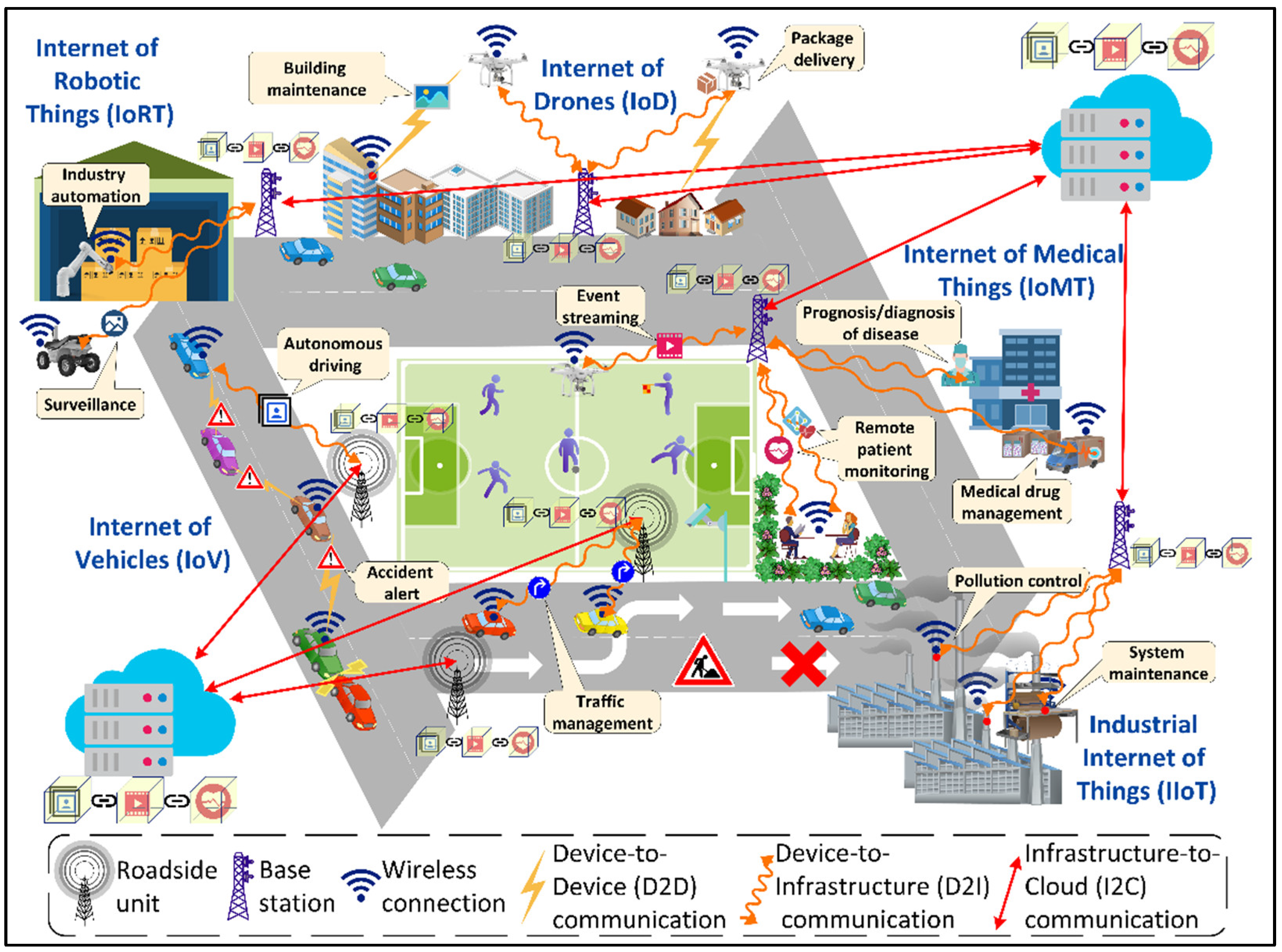
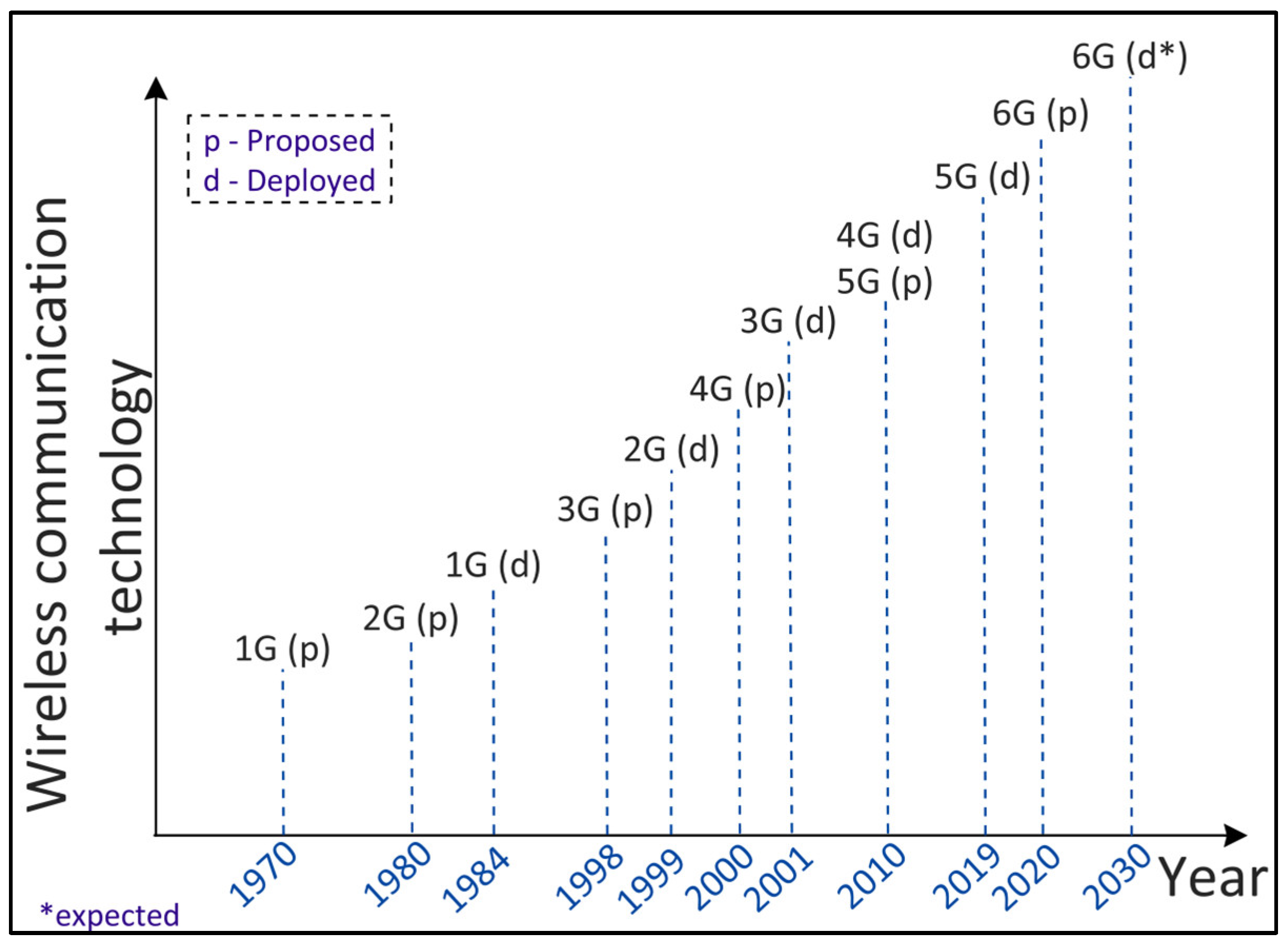
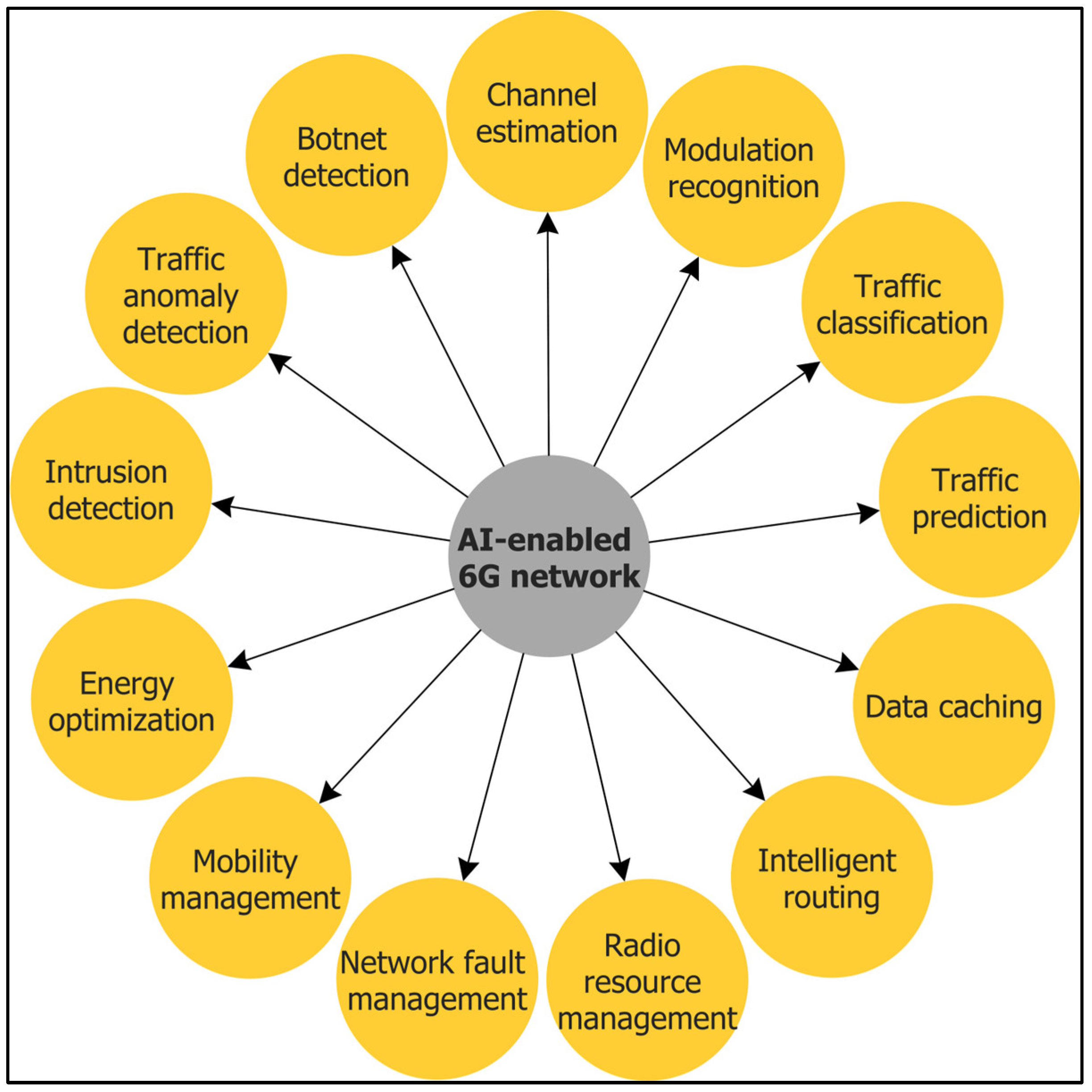
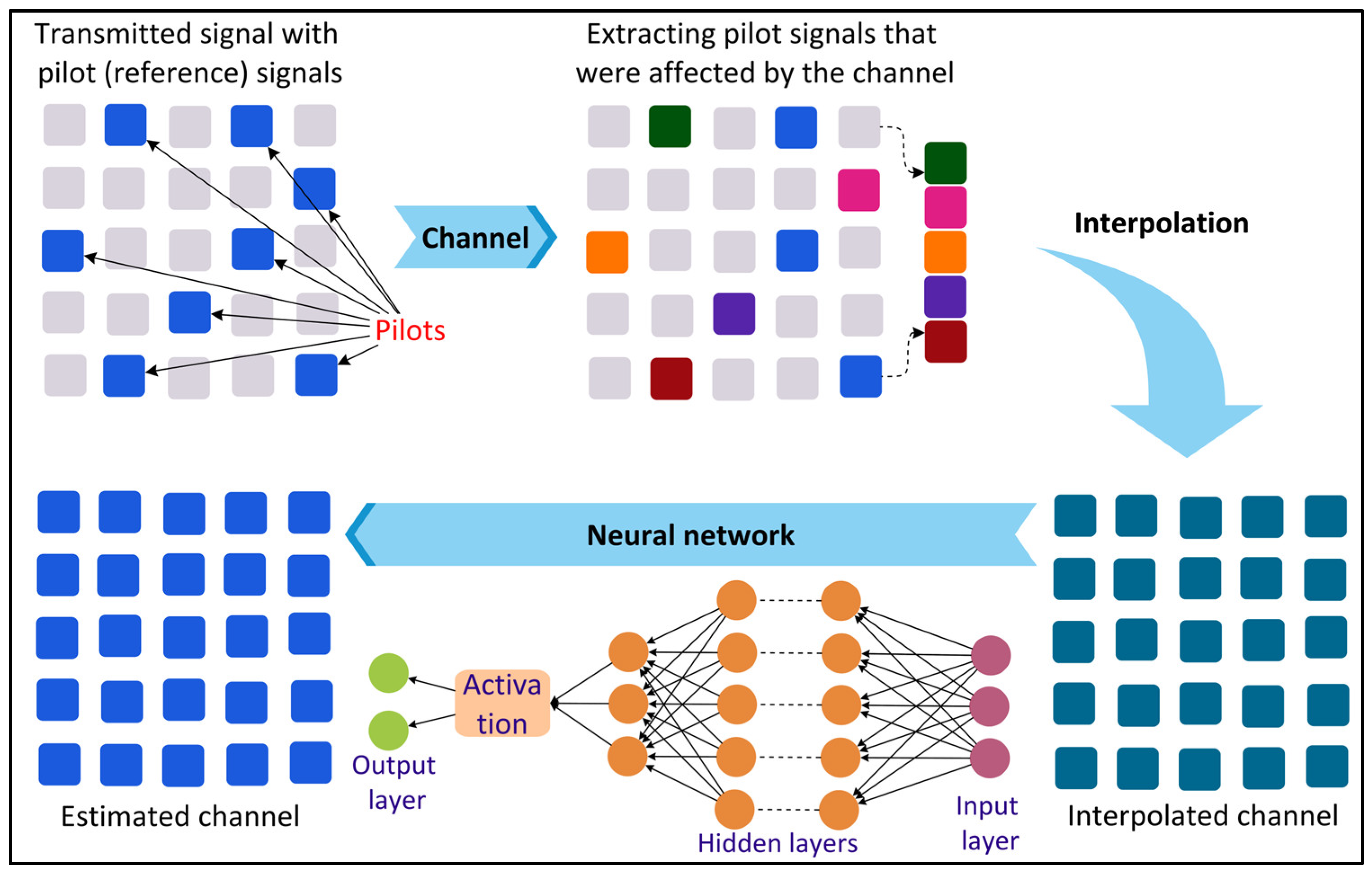
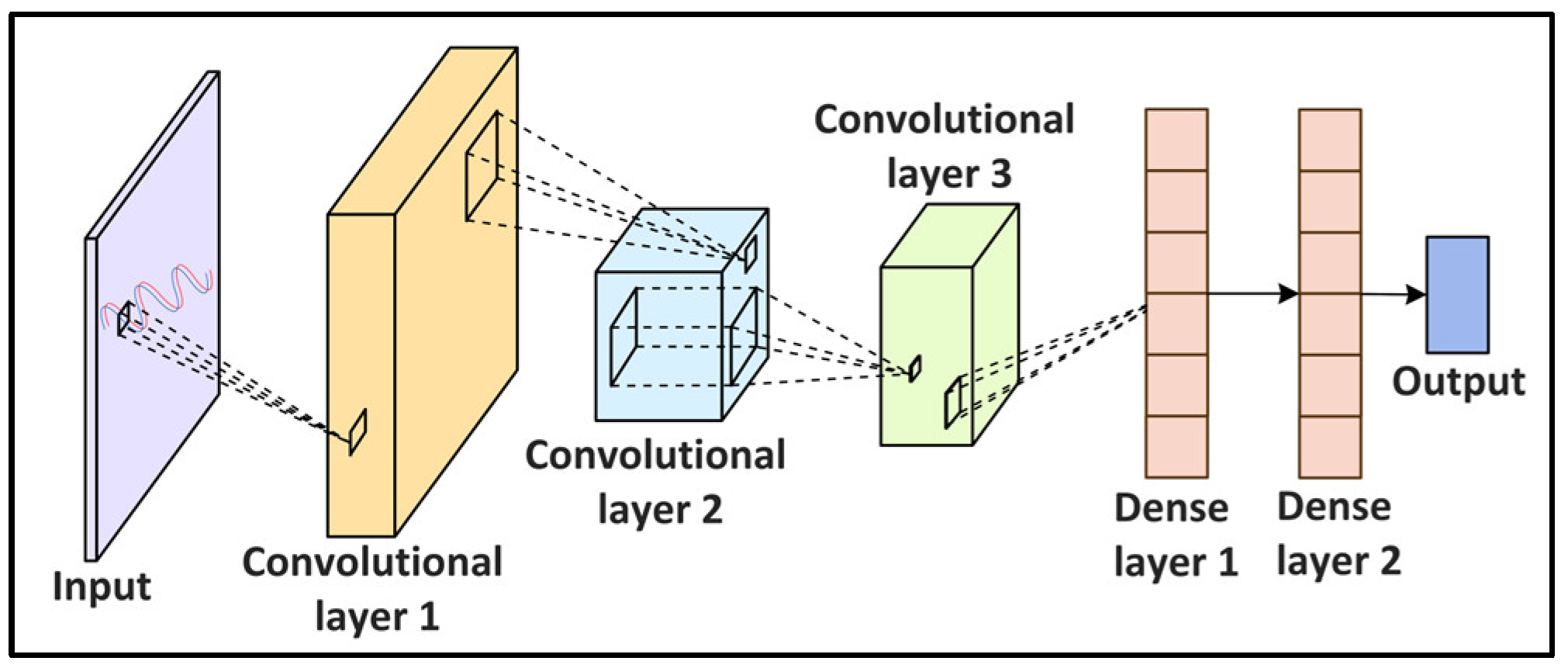
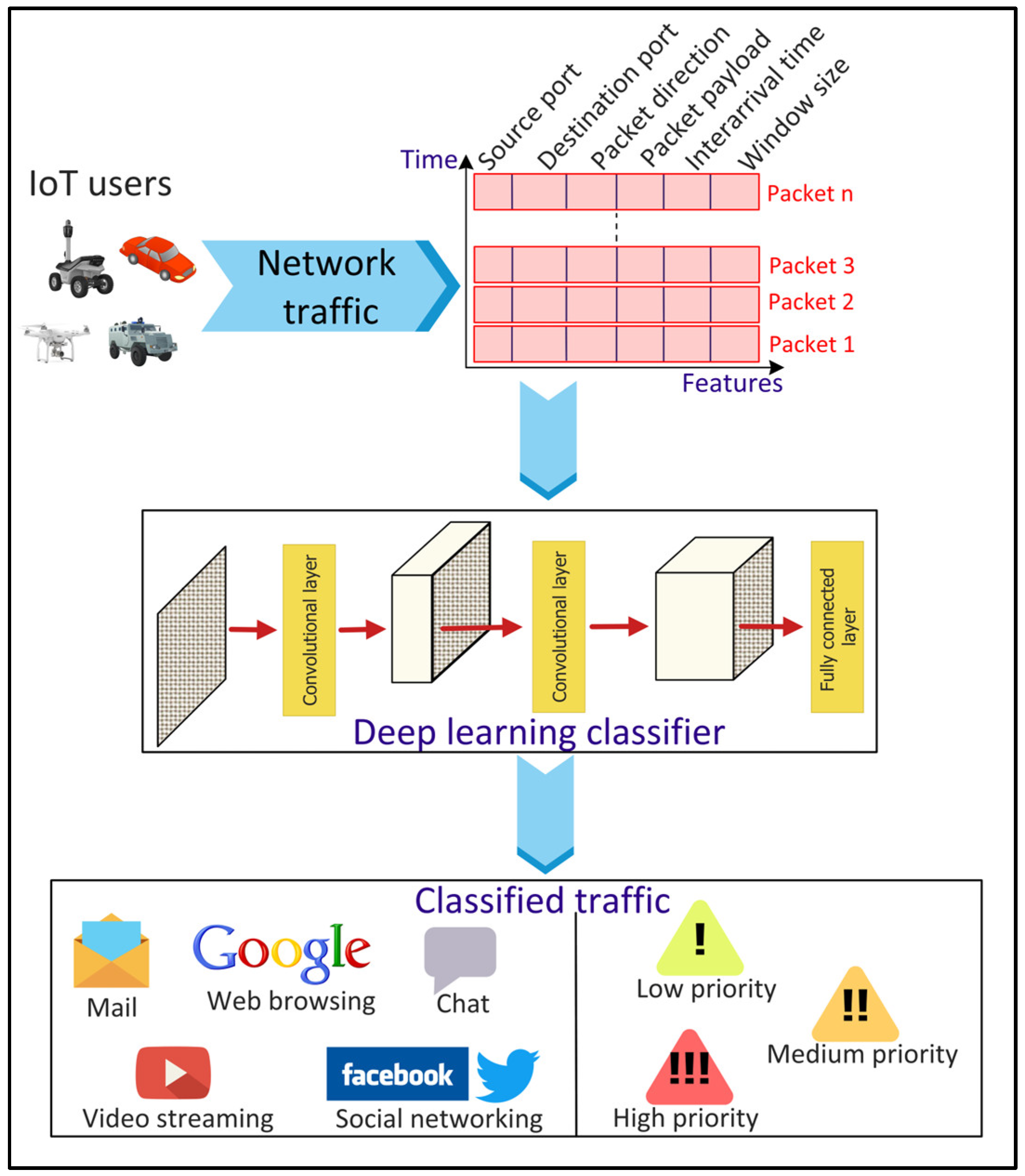
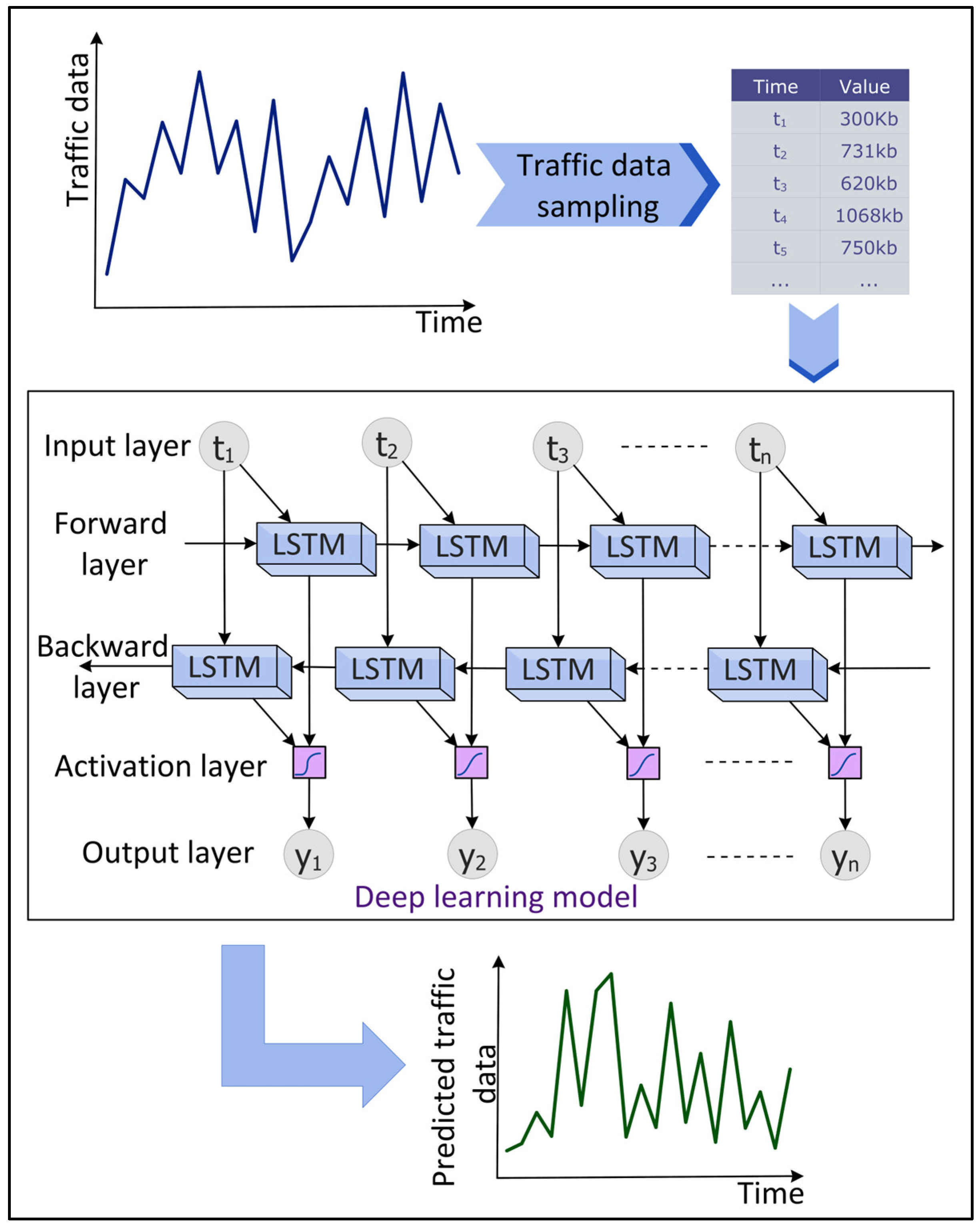
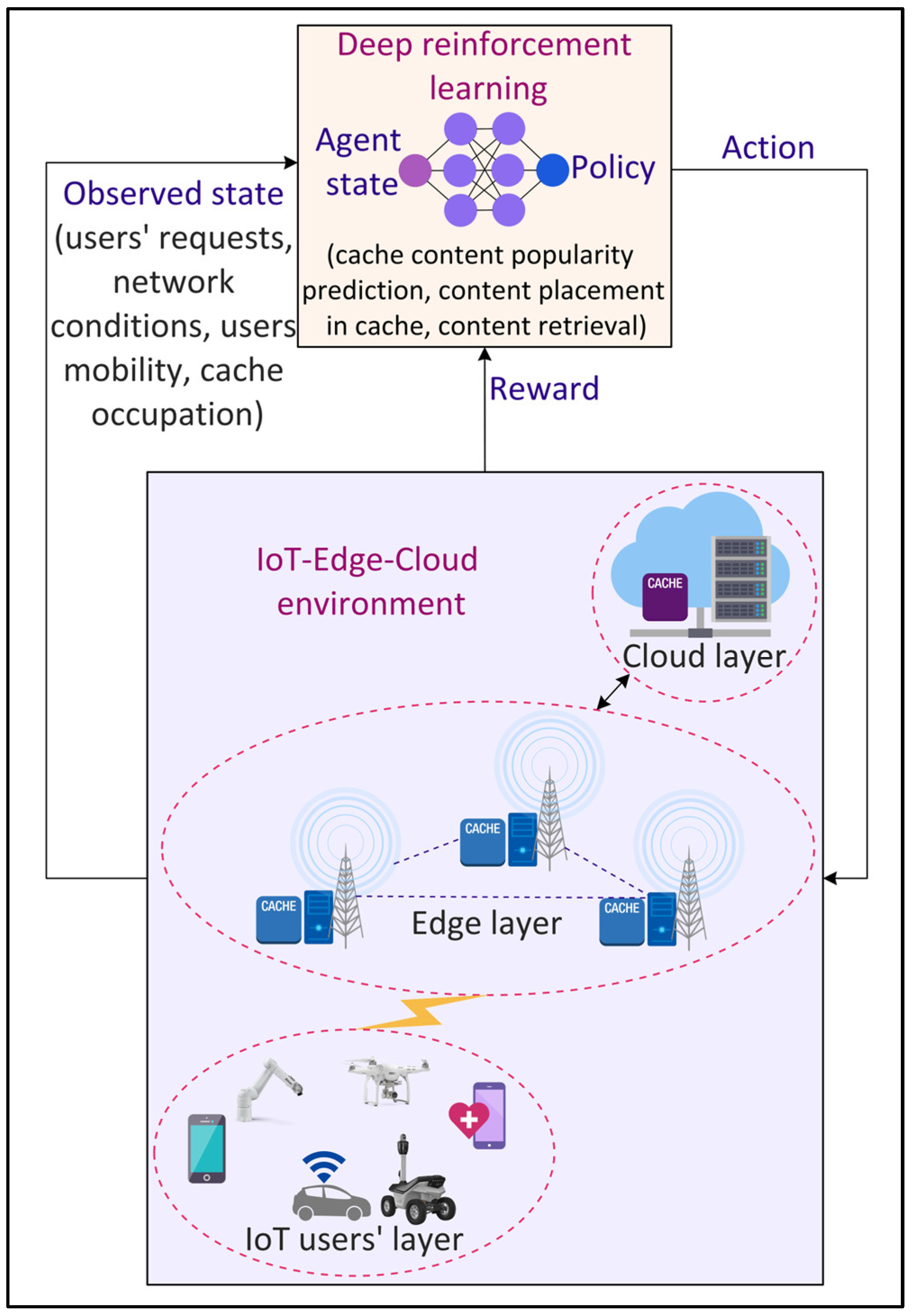

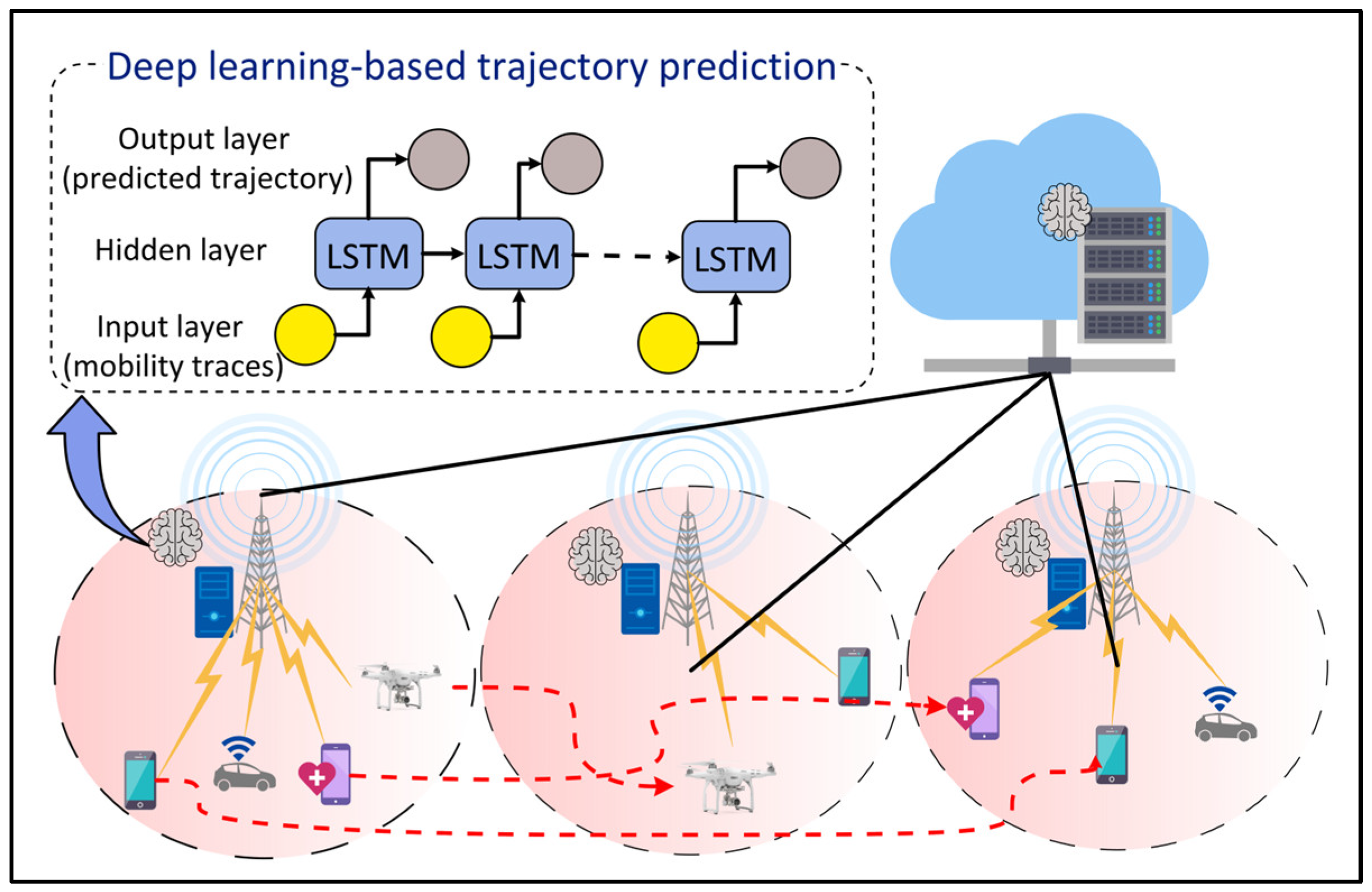
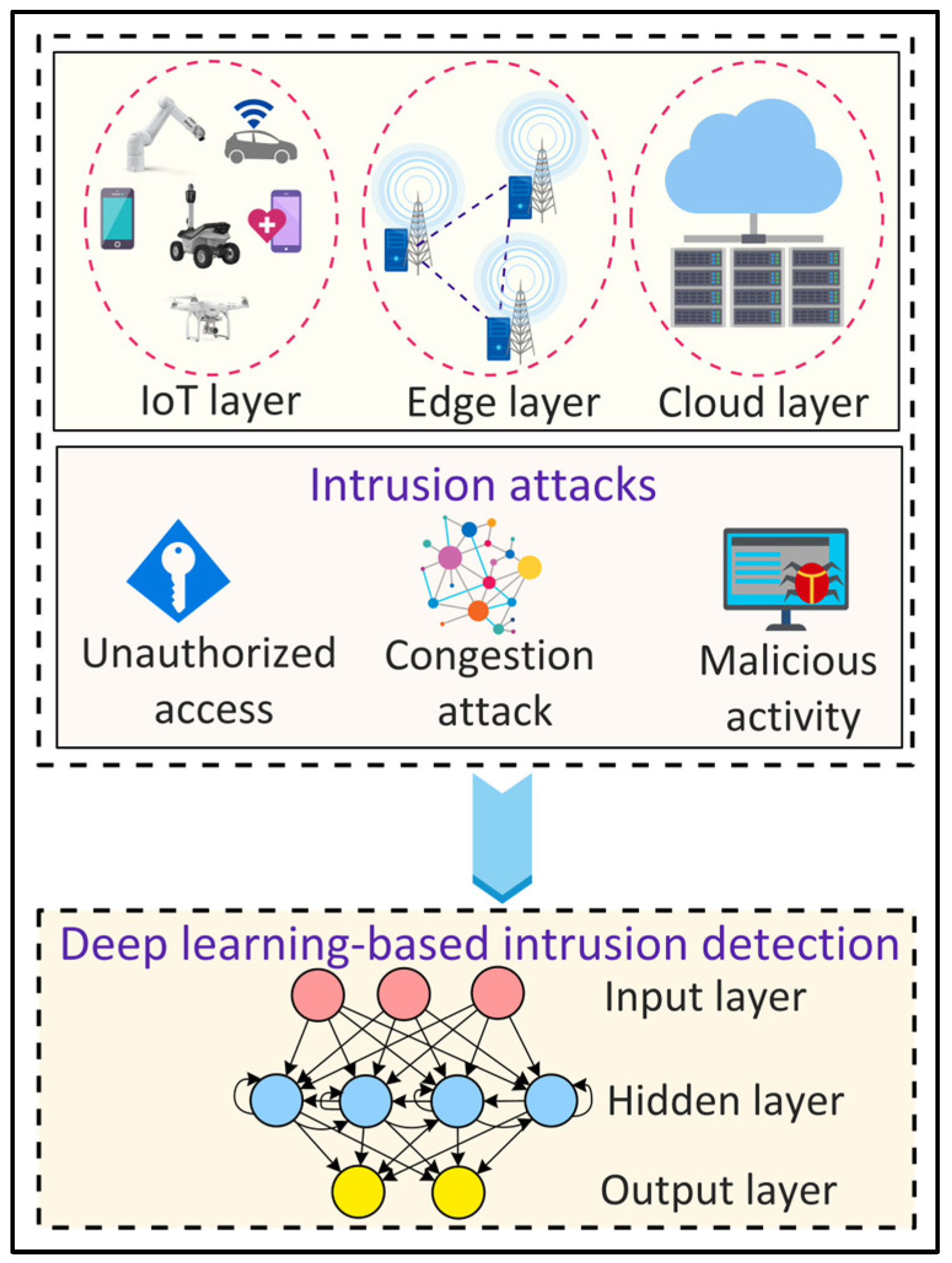
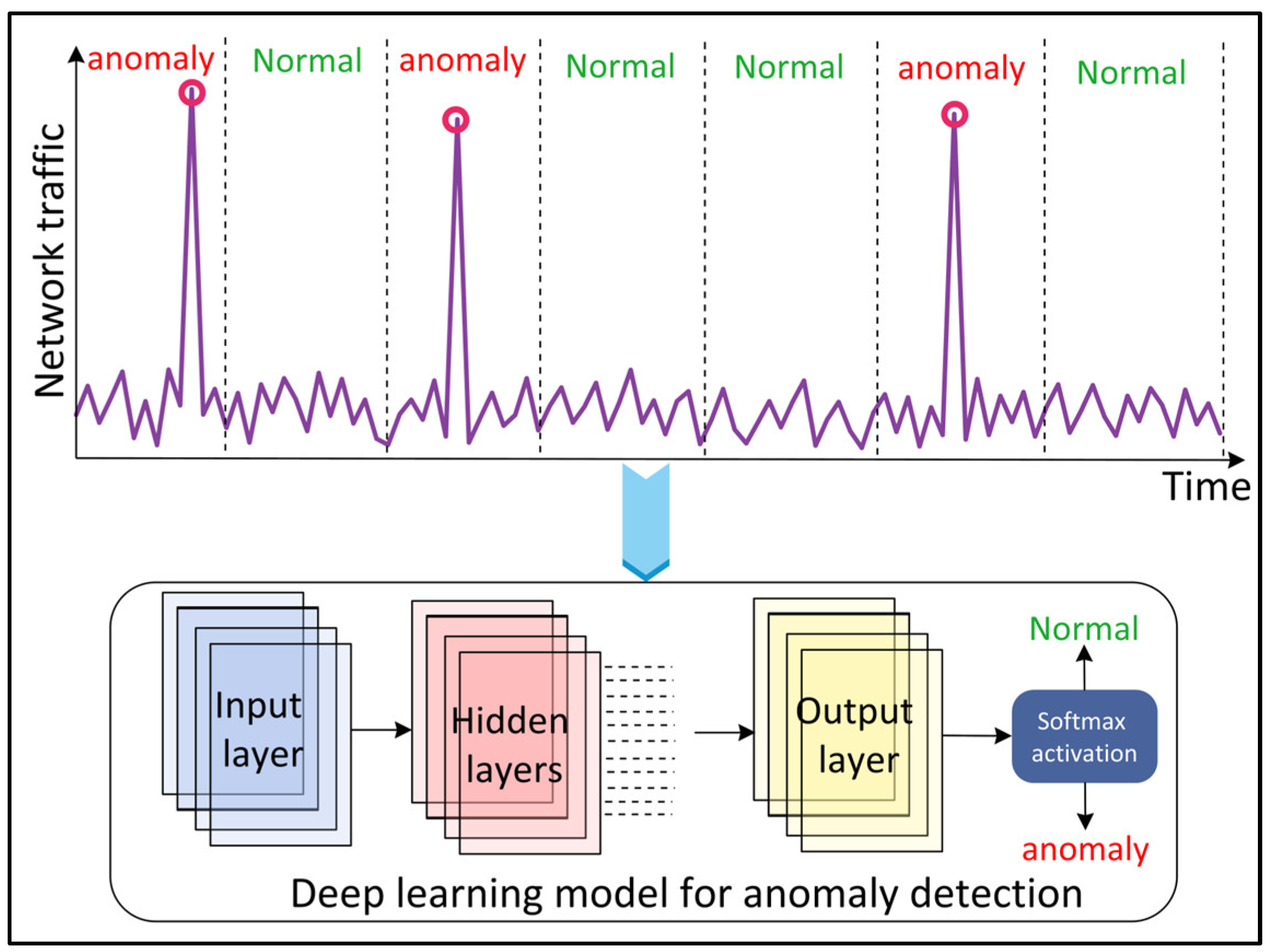
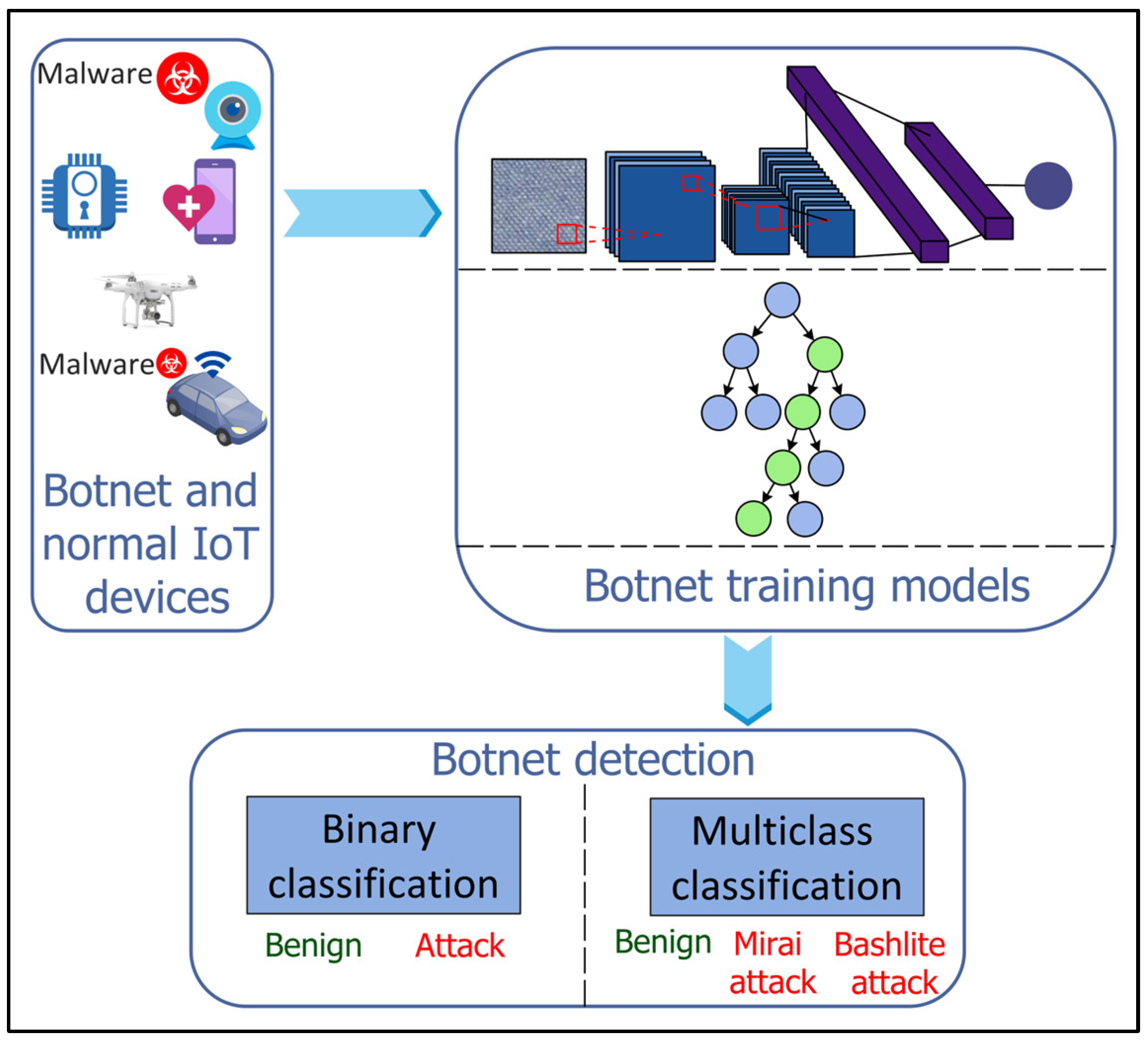
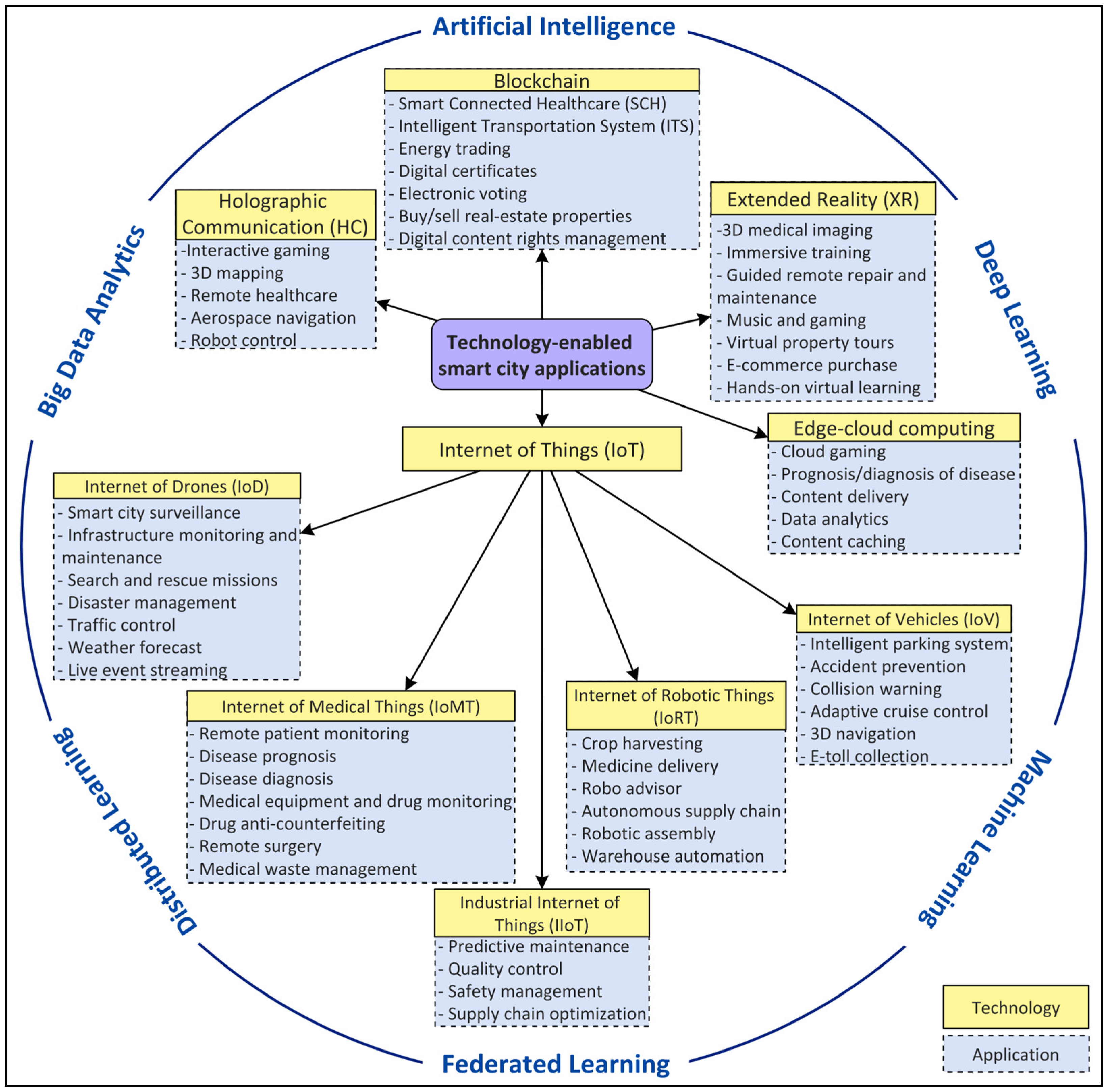


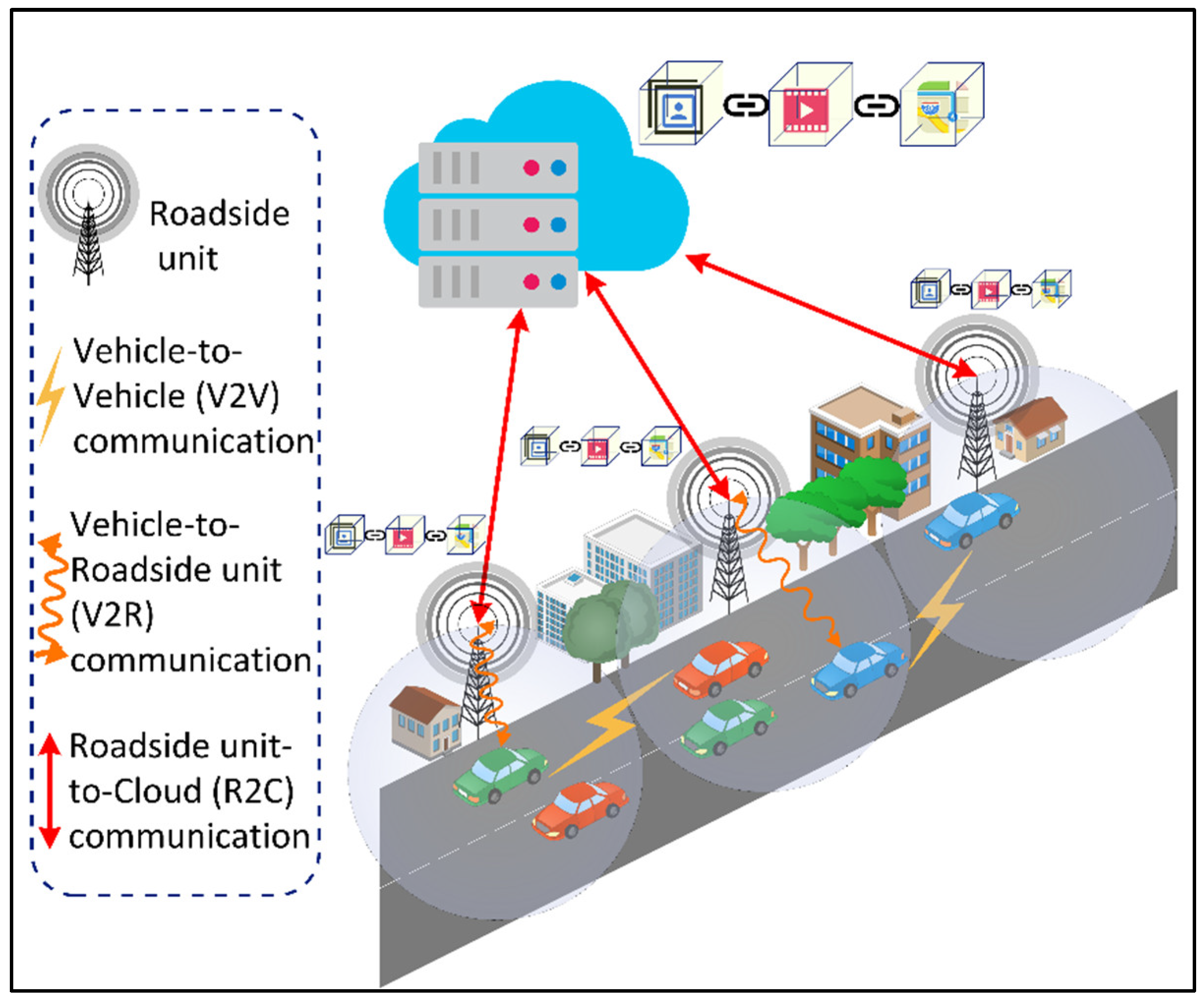
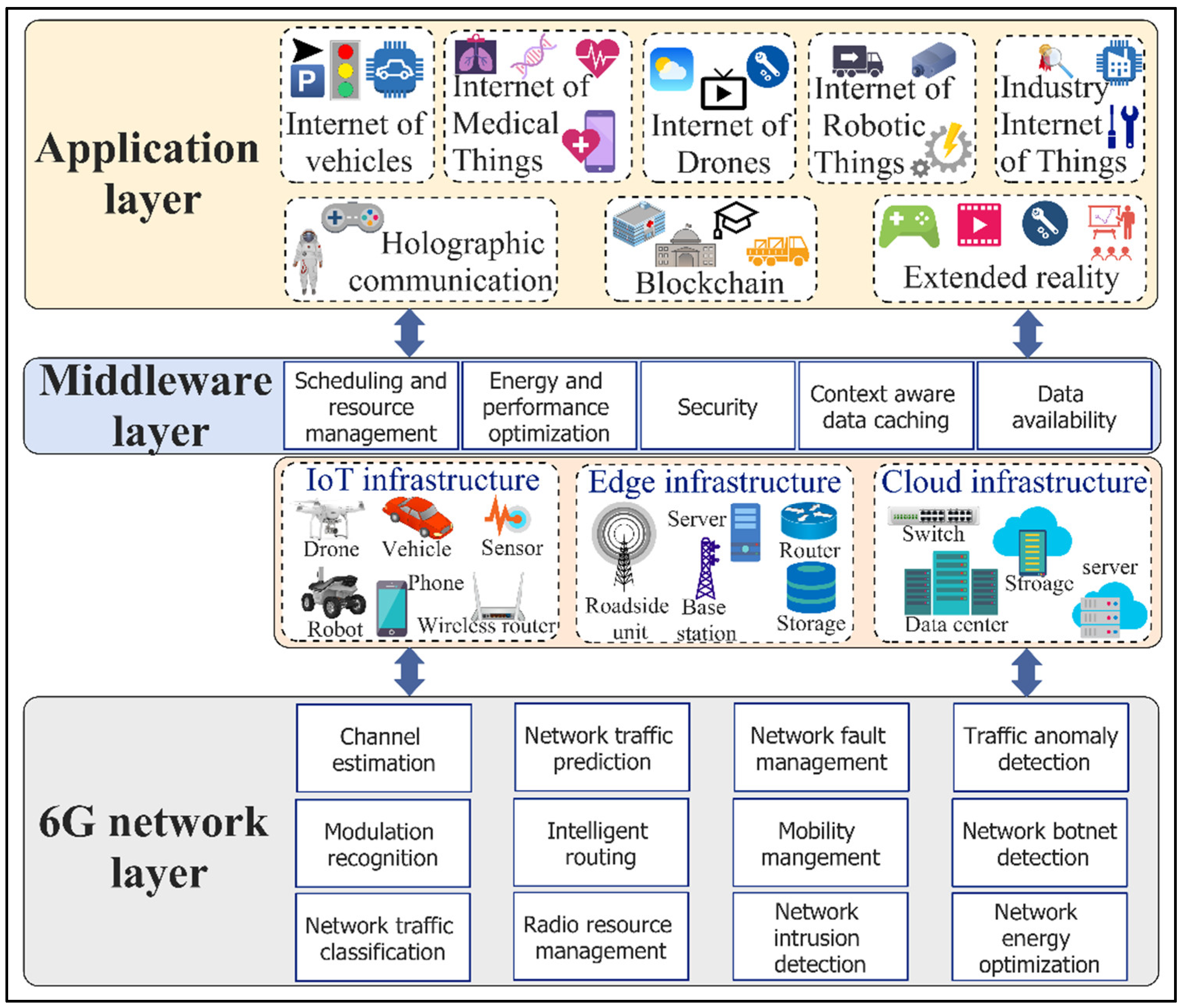
| Work | Approach | Evolution of Wireless Communication Technology | AI-Enabled 6G Networks | Technology-Enabled Applications in 6G |
|---|---|---|---|---|
| [16] | Top-down | ✓ | ✕ | ✓ |
| [17] | ✕ | ✕ | ✓ | |
| [18] | Down-Top | ✕ | ✓ | ✕ |
| [20] | ✕ | ✓ | ✕ | |
| [19] | ✕ | ✓ | ✕ | |
| [21] | ✕ | ✓ | ✕ | |
| This paper | Holistic | ✓ | ✓ | ✓ |
| Network | 1G | 2G | 3G | 4G | 5G | 6G | |
|---|---|---|---|---|---|---|---|
| Features | |||||||
| Start | 1970 | 1980 | 1998 | 2000 | 2010 | 2020 | |
| Deployment | 1984 | 1999 | 2001 | 2010 | 2019 | 2030 * | |
| Technology | AMPS, NMT, TACS | GSM, GPRS, EDGE | WCDMA, UMTS | LTE, WiMAX | MIMO, mm Waves | THz communications, VLC | |
| Frequency | 30 KHz | 1.8 GHz | 1.6–2 GHz | 2–8 GHz | 3–30 GHz | 95 GHz–3 THz | |
| Multiplexing | FDMA | TDMA/CDMA | CDMA | OFDMA | OFDM | OFDM | |
| Switching | Circuit | Circuit, packet | Packet | All packet | All packet | All packet | |
| Core network | PSTN | PSTN | Packet Network | Internet | Internet | Internet | |
| Primary services (in addition to previous generations) | Voice calls | International roaming voice calls, conference calls, SMS, MMS, WAP, WWW, and emails | Video conferencing, GPS | Mobile web access, IP telephony, 3D videos, HD mobile TV | Machine vision, connected cars, smart homes, AR | Tactile and haptic internet, connected autonomous systems, holographic society | |
| Peak data rate | NA | 50 Kbps (GPRS) 1 Mbps (EDGE) | 21 Mbps | 100 Mb/s | 20 Gb/s | ≥1 Tb/s | |
| Mobility support | NA | NA | NA | 350 km/h | 500 km/h | ≥1000 km/h | |
| Latency | NA | 300 ms | 100 ms | 10 ms | 1 ms | 10–100 µs | |
| Network energy efficiency (compared to 4G) | NA | 0.01x | 0.1x | 1x | ≥10x | ≥100x | |
| Spectral efficiency (compared to 4G) | NA | NA | 0.6x | 1x | 3x | ≥15x | |
| Area traffic capacity | NA | NA | 1 Kbps/m2 | 0.1 Mbps/m2 | 10 Mbps/m2 | 1 Gbps/m2 | |
| Connection density (devices/km2) | NA | NA | 104 | 105 | 106 | 107 | |
Publisher’s Note: MDPI stays neutral with regard to jurisdictional claims in published maps and institutional affiliations. |
© 2022 by the authors. Licensee MDPI, Basel, Switzerland. This article is an open access article distributed under the terms and conditions of the Creative Commons Attribution (CC BY) license (https://creativecommons.org/licenses/by/4.0/).
Share and Cite
Ismail, L.; Buyya, R. Artificial Intelligence Applications and Self-Learning 6G Networks for Smart Cities Digital Ecosystems: Taxonomy, Challenges, and Future Directions. Sensors 2022, 22, 5750. https://doi.org/10.3390/s22155750
Ismail L, Buyya R. Artificial Intelligence Applications and Self-Learning 6G Networks for Smart Cities Digital Ecosystems: Taxonomy, Challenges, and Future Directions. Sensors. 2022; 22(15):5750. https://doi.org/10.3390/s22155750
Chicago/Turabian StyleIsmail, Leila, and Rajkumar Buyya. 2022. "Artificial Intelligence Applications and Self-Learning 6G Networks for Smart Cities Digital Ecosystems: Taxonomy, Challenges, and Future Directions" Sensors 22, no. 15: 5750. https://doi.org/10.3390/s22155750
APA StyleIsmail, L., & Buyya, R. (2022). Artificial Intelligence Applications and Self-Learning 6G Networks for Smart Cities Digital Ecosystems: Taxonomy, Challenges, and Future Directions. Sensors, 22(15), 5750. https://doi.org/10.3390/s22155750







